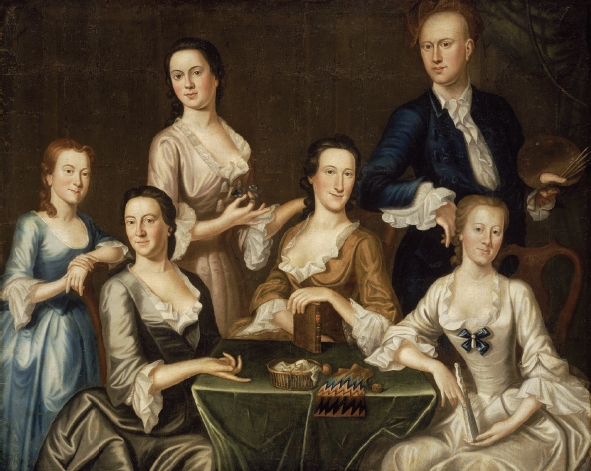Urban Society

Wealthy merchants dominated the social life of seaport cities. In 1750, about 40 merchants controlled more than 50 percent of Philadelphia’s trade. Like the Chesapeake gentry, urban merchants imitated the British upper classes, importing architectural design books from England and building Georgian-style mansions to display their wealth. Their wives strove to create a genteel culture by buying fine furniture and entertaining guests at elegant dinners.
Artisan and shopkeeper families, the middle ranks of seaport society, made up nearly half the population. Innkeepers, butchers, seamstresses, shoemakers, weavers, bakers, carpenters, masons, and dozens of other skilled workers toiled to gain an income sufficient to maintain their families in modest comfort. Wives and husbands often worked as a team and taught the “mysteries of the craft” to their children. Some artisans aspired to wealth and status, an entrepreneurial ethic that prompted them to hire apprentices and expand production. However, most artisans were not well-to-do. During his working life, a tailor was lucky to accumulate £30 worth of property, far less than the £2,000 owned at death by an ordinary merchant or the £300 listed in the probate inventory of a successful blacksmith.
Laboring men and women formed the lowest ranks of urban society. Merchants needed hundreds of dockworkers to unload manufactured goods and molasses from inbound ships and reload them with barrels of wheat, fish, and rice. For these demanding jobs, merchants used enslaved blacks and indentured servants, who together made up 30 percent of the workforce in Philadelphia and New York City until the 1750s; otherwise, they hired unskilled wageworkers. Poor white and black women eked out a living by washing clothes, spinning wool, or working as servants or prostitutes. To make ends meet, laboring families sent their children out to work.
Periods of stagnant commerce threatened the financial security of merchants and artisans alike. For laborers, seamen, and seamstresses — whose household budgets left no margin for sickness or unemployment — depressed trade meant hunger, dependence on public charity, and (for the most desperate) petty thievery or prostitution. The sugar- and slave-based South Atlantic System, and cycles of imperial warfare, brought economic uncertainty as well as opportunity to the people of the northern colonies.